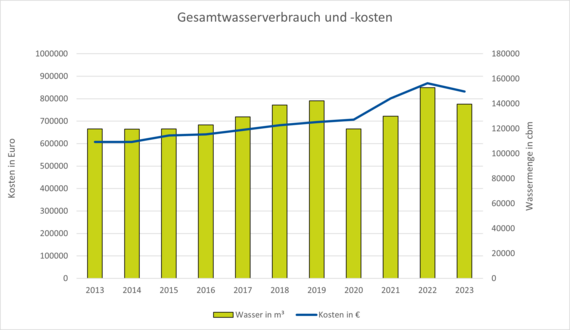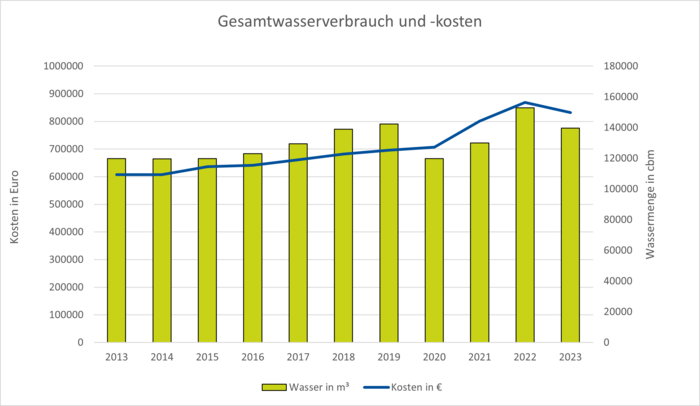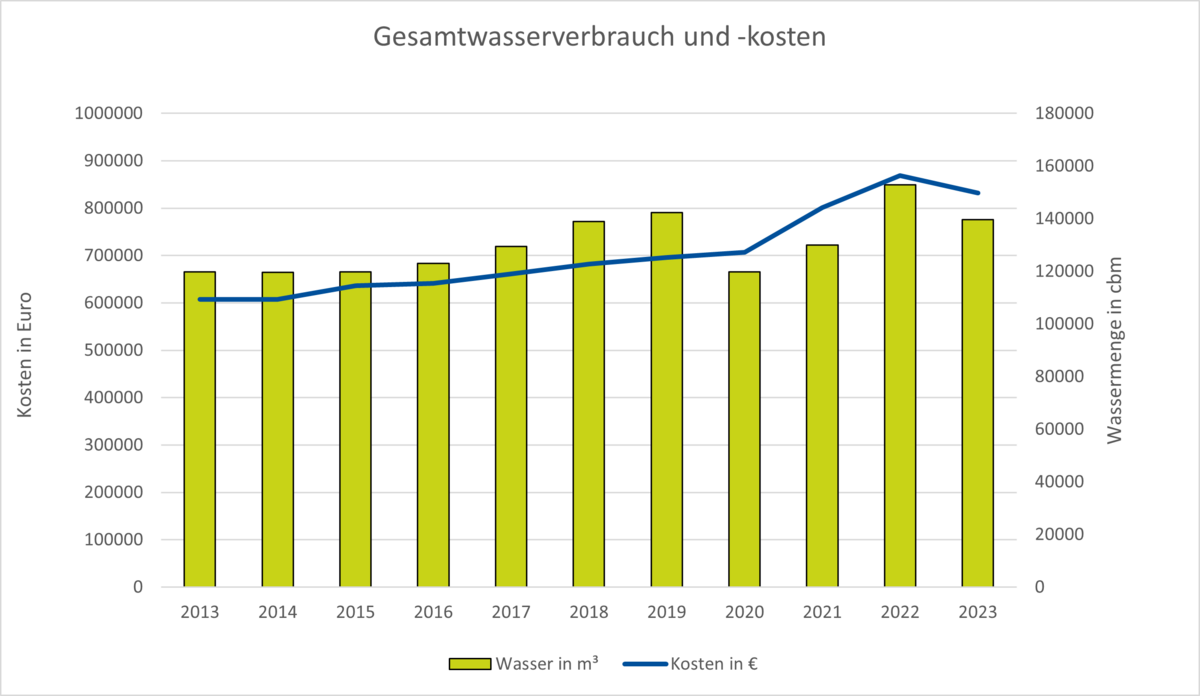

 ©
Pia Oetjen
©
Pia Oetjen
The topic of water is of particular importance at Leibniz University Hannover (LUH) and part of the environmental management. On this web page we would like to present some projects on water use at LUH, as they make a special contribution to the sustainable action at the university.
The projects at LUH are oriented towards the Sustainable Development Goal (SDG) 6 „Clean water and sanitation“.
Total water consumption and costs at Leibniz University Hannover



Following the significant drop in consumption in 2020 due to the partial closure of LUH as a result of the coronavirus crisis, water consumption rose again significantly. In 2023, water consumption fell again significantly to pre-coronavirus and pre-drought summer levels. Nevertheless, water consumption needs to be reduced. However, with the Welfengarten and horticulture in Herrenhausen, LUH is dependent on using water to irrigate plants. Here, the watering times set by the city of Hanover must be adhered to and water must be used sparingly in general.
For the irrigation of outdoor facilities, in addition to well water at the Moritzwinkel Sports Institute, water is taken from the Leine River at the horticultural facility in Ruthe. The large wave canal of the Ludwig-Franzius Institute for Hydraulic Engineering uses the nearby Mittelland Canal for water withdrawal (Reference Umweltbericht 2022, S. 37).
Example projects on the topic of water at Leibniz University Hannover
-
Rainwater-toilet at Leibniz University Hannover
On the sports campus in the new building 1806 (Moritzwinkel), rainwater is used for flushing the toilets.
A rainwater cistern first collects the rainwater, which is then pumped to the toilets via a separate pipe network and a so-called rainwater manager. Rainwater and drinking water shouldn’t be mixed, which is why the rainwater manager also functions as a separation station. After the collected rainwater has been used up, drinking water can also be fed into the mains supply to operate the toilet flushes, if required.
-
Green roofs
![]()
![]()
![]() ©
LUH
©
LUH
With regard to the current development of the climate, the overheating and drought, green roofs are increasingly in focus.
At Leibniz University Hannover, there is a various amount of green roofs for climate protection. Selected roofs are gradually being converted into green roofs and it will be examined whether it is possible to combine the green roofs with a photovolataic system.
Green roofs offer several advantages:
- Noise reduction
- design diversity
- additional green and usable areas, biodiversity
- Improvement of air quality
- Reduction of overheating
- Rainwater retention and reduction of sewer loads
- Energy saving
Useful plant species for green roofs are mainly perennials and grasses of various kinds.





